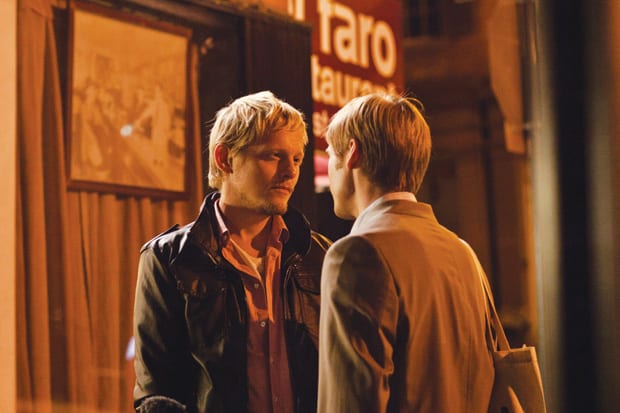‘Keep the Lights On’ joins ‘Weekend’ and ‘Shame’ in the pantheon of new films making honest statements about sex and longing in the modern age

HOT AND COLD | Thure Lindhardt’s naturalistic portrayal of a gay man in all his moods fuels ‘Keep the Lights On,’ a return to serious gay cinema.
ARNOLD WAYNE JONES | Life+Style Editor
Serious gay cinema has gone through a lot of changes since the days of Rainer Werner Fassbinder’s Fox and His Friends (1975) and Frank Ripploh’s Taxi Zum Klo (just out on a remastered DVD) — much of it not good. Early films were frank, often angry portrayals of the gay subculture not accessible to most people. They had passion and energy and often lots of sex — warts-and-all portrayals of specific people.
 But storytellers have gotten lazy. They’ve settled into predictable melodramas, or seem happy churning out self-indulgent comedies instead of thoughtful dramas. (Maybe AIDS made it harder to be so aggressively sexual.)
But storytellers have gotten lazy. They’ve settled into predictable melodramas, or seem happy churning out self-indulgent comedies instead of thoughtful dramas. (Maybe AIDS made it harder to be so aggressively sexual.)
Then last year’s Weekend — and, in a smaller way, Shame — ushered in a new aesthetic, which is actually sort of an old one: Explicit, honest dramas about the way gay folk (OK — gay men) actually deal with relationship issues.
Add to that list Keep the Lights On. It’s 1998 in the East Village, and Erik (Thure Lindhardt), a documentary filmmaker and photographer, is looking for sex. On the phone. In the age of Grindr, it’s hard to imagine when people used to talk to find a hookup. Other than that, not much has changed in 15 years: Gay men are still horny, but also some, like Erik, are looking for a genuine connection.
He may have found it in Paul (Zachary Booth), a closeted lawyer who seems to love Erik but whose drug habit becomes a hindrance.
And so if goes, over years of their relationship — Erik works on his latest film, Paul undergoes rehab and they both … well, that’s the story.
Written and directed by Ira Sachs, Keep the Lights On hops along almost too quickly though always fluidly as Erik copes and struggles and in many ways comes into his own. Like Michael Fassbinder’s character in Shame, Erik struggles with conflicted feelings through an often wordless portrayal.
Sachs doesn’t over-explain what his characters are thinking (although he does occasionally dip into the familiar trough of gay melodrama — drugs, HIV, infidelity), which allows Lindhardt to carry the film through his naturalistic performance. Erik is petulant, needy, honest, confused and passionate in turn, as we all are, and Lindhardt doesn’t shy away from showing it all.
Sachs’ visual style, almost documentary in nature, conveys an unobtrusive intimacy, which is especially effective in the borderline-explicit sex scenes. Despite great leaps in time, the pacing is unrushed and plays out with great authenticity.
Perhaps the best thing, though, about Keep the Lights On (which debuted earlier this year at Sundance) is that it seems to mark a new dedication to making movies about gay issues that neither pander nor resort to time-worn clichés. It’s about time for a renaissance in gay film; this may be among the signal entries that usher it in.
This article appeared in the Dallas Voice print edition October 19, 2012.
















